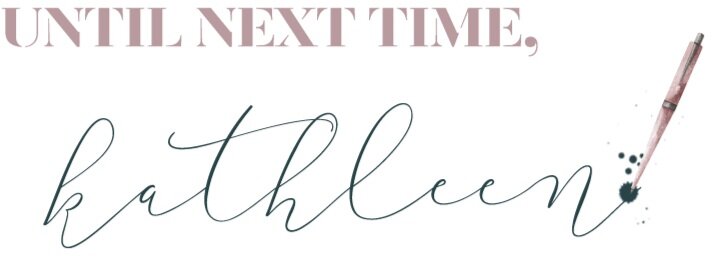My first writing job was as a reporter for The Miami Herald. I was hired while in college by an editor who loved mentoring and teaching young journalists.
I still use the tips I learned back then every day when I sit down to write. But one lesson has completely transformed my writing routine. It can solve so many writing struggles for writers, business owners, content creators and just about anyone who communicates with words.
The Day My Writing Process Changed
It all started when I was struggling to write a story on deadline. I had done my interviews and reporting, and all that was left was to sit down and stitch it all together. The story felt easy — like it should be able to write itself.
Yet more than an hour later, I had some random graphs, a half-assed opening and was struggling to make it all work together. I was becoming more anxious and frustrated as the minutes and hours ticked by. I had a deadline and other stories to write. I didn’t have time to sit around and wait for the magical muse to appear and drop the right words into my lap.
I went to the break room and was telling a friend about the story (ie: whining and complaining) as I poured myself another cup of coffee. A veteran journalist overheard our conversation as he read the newspaper. After a few minutes, he stood up and collected his things to leave. Before he walked out the door, he turned around and said, “If you can’t write the story, it means something is missing from your notebook.”
Then he walked out.
I stood there thinking about what he said, trying to make sense of it. I had done my interviews and research — what was missing?
I took my coffee back to my desk and attempted to draft the story for the 25th time, all the while mulling over what the guy had said. Deep down, I knew the guy was talented and knew a helluva lot more than me, so he probably knew what he was talking about. So, I swiveled my chair away from the computer and keyboard, grabbed a fresh steno notebook and started sketching out a brief, bulleted outline of the story.
Within minutes, I found the hole in my story.
I had wasted hours on dead-ends when if I had taken just a few minutes to think through the story in its entirety, I would have spotted the hole right away. I made a few calls to get the missing information that I needed and was able to write the story in record time.
The Writing Before the Writing
That day, my writing process and routine changed. Now, before I start typing away at my keyboard, I take a few minutes to think through what I’m going to write and why.
I can already hear the naysayers balking, “But I write to figure out what I want to say! An outline is too restrictive! I don’t have time to sit and plan!”
I get it — I used to think the same way. But unless you’re just journaling to work through a problem, a few minutes of prep work will help you immensely. This works for writing emails, blog posts, articles, captions, etc.
In 99.9% of the cases — and especially when writing for your business — taking some time to figure out what you want to say and why will save you time, stress and heartache. It’s a game changer. And it’s the key to ensuring all of your content, copy and messaging supports your goals.
Boost Your Writing with a Pre-Writing Routine
Craft clearer, more concise copy by thinking before you write. Here’s how:
-
Know Your Point— and Type it On Top
There is a point to every piece of writing. You should be able to state the point succinctly, as if you are telling your best friend. Leave out the business jargon and fluff.
Another way to think about it is to envision your desired outcome. This goes with the old adage “Begin with the end in mind.” What do you want people to walk away thinking or doing? Do you want them to simply be entertained or end up with a new social media strategy? Are you trying to inspire someone by sharing a piece of your own story or do you want them to take action and book an appointment with you?
Know what you want to happen so that you can make it happen.
Then type your point in big letters or in bold at the the top of the page/document where you are writing. It will stay there until you are completely done.
Every time you sit down to write — and especially when you start to edit — reread the point that you wrote at the top of the page. This will help you stay on target and reduce tangents. If you get stuck, re-read the point. Stay focused on what you are writing and why.
-
List Out the Messages that Will Support your Point
This is one of the easiest ways to spot holes in your piece of copy, help you clearly see the right order of information, and spot an overarching theme or problem. And it should take you less than 5 minutes.
There’s no need to be fancy or get too detailed — just make a short-and-simple bulleted list on note paper and include any notes that you don’t want to forget (because you will, and then remember at the most inconvenient time, like cooking dinner or picking up boys from hockey practice).
Since it’s short and easy, this can seem like a step to skip. Don’t. It can save you so much time by helping you spot things before you sit down and write hundreds or thousands of words that you need to move around — or even worse – have to cut.
-
Kill Your Darlings
One of the best and quickest ways to improve any piece of writing is to cut out anything and everything that is not critical to making that one, singular point.
When you’re done writing and have worked to finesse the piece some, do at least one read through going line-by-line to see if every single sentence is needed to help you make your point. If not, out it goes. The delete button is your friend, my friend.Sad to see lines and phrases that you love hit the cutting room floor? Cut them from this piece — but save them for later. Paste them into an ongoing notes document that you can pull from later. It may make the process seem just a tad bit less painful.
These tips might not seem earth-shattering, but they can make a big difference. And as Stephen Covey says, “Common sense is not always common practice.”
Make these simple, common sense tips common practice. Let then me know how it goes.
Happy writing.


+ show Comments
- Hide Comments
add a comment